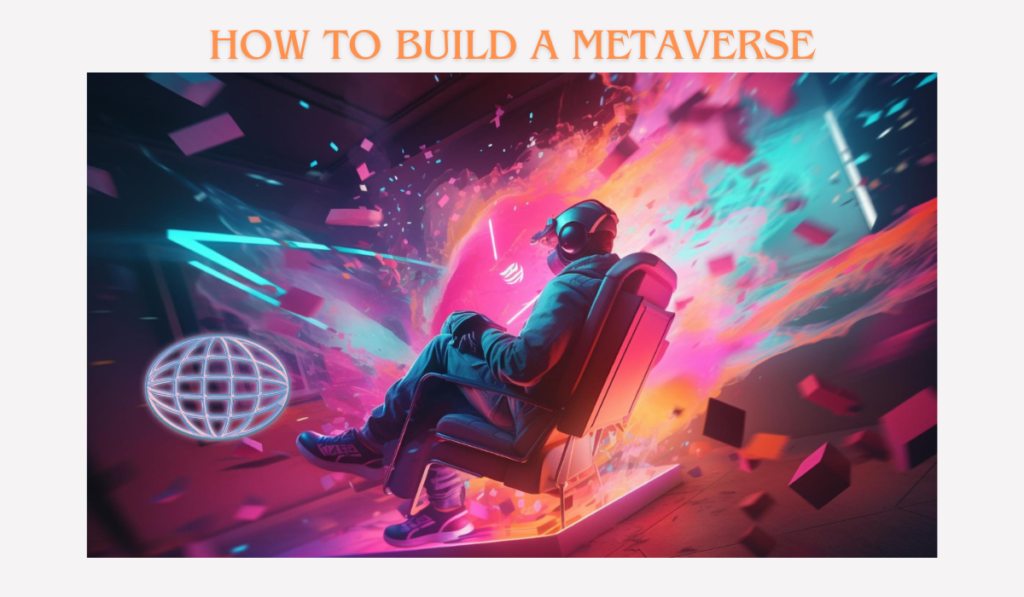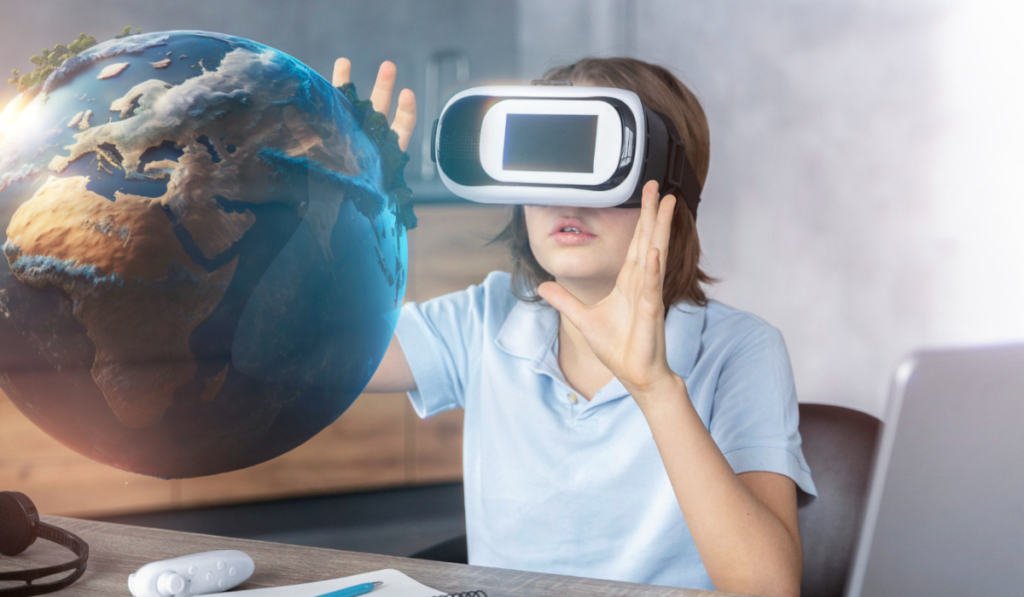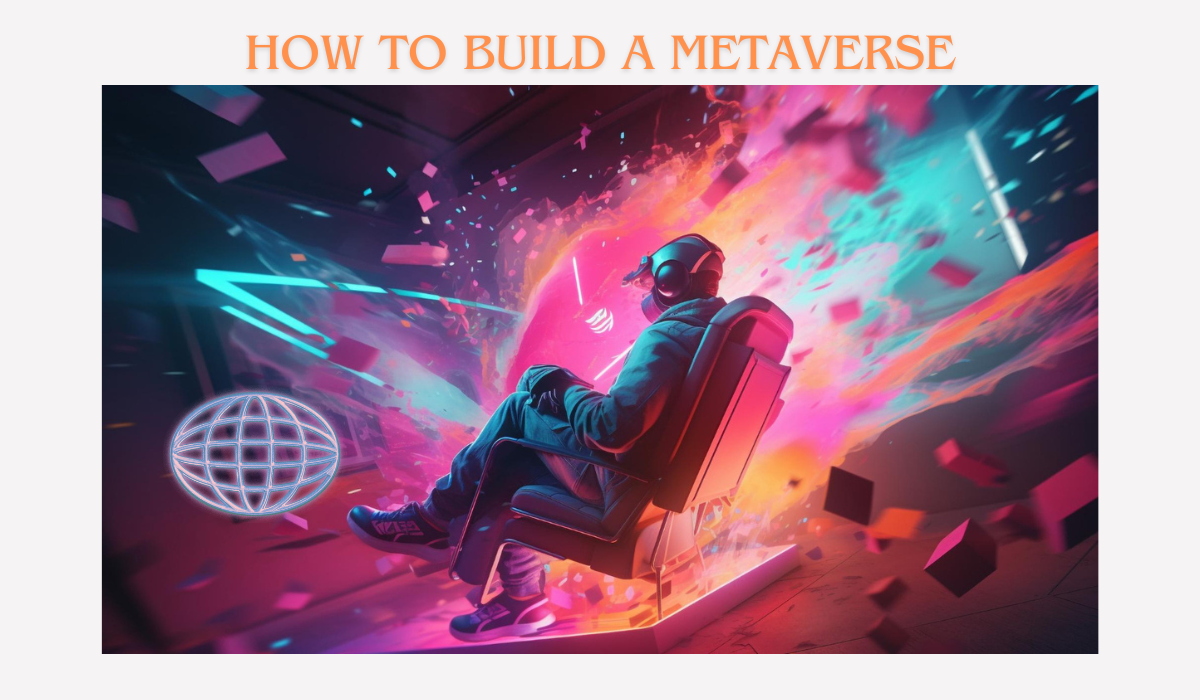You must have seen the scene in Iron Man 2 where Tony Stark discovers the new element. He uses advanced virtual technology to build his metaverse. Many of us were curious since that is how to build a metaverse.
Imagine digital models becoming a physical reality. Metaverse is based on this concept. It has broadened the dimensions of imagination for entrepreneurs, investors, and tech enthusiasts. In this regard, science fiction has fueled the fire.
It is based on three main components: virtual reality, augmented reality, and mixed reality. So, let us discover this universe and how we can build it for ourselves.
What is metaverse?
The Metaverse is an intricate and intertwined ecosystem. It comprises augmented realities in virtual worlds and digital spaces. Users can interact in real-time in the digitally created environment.
So, to understand the concept, you must be aware of all its components first. In this way, it will become easier for anyone looking to build or contribute to the development of the Metaverse.
Components of Metaverse
- Virtual Reality (VR)
Virtual Reality is the heart of Metaverse. It is an immersive digital experience that transports users to computer-generated environments. Additionally, it uses VR headsets, motion controllers, and spatial audio to create a realistic and interactive virtual space.
- Augmented Reality (AR)
Augmented reality transfers digital information into the real world. It enhances users’ perception of their surroundings. Moreover, AR significantly creates a seamless integration between the physical and virtual realms within the Metaverse.
- Mixed Reality
It is a term that combines the real world with the digitally created environment. According to this concept, mixed reality can combine the physical and virtual environments in real life. Furthermore, it is often referred to as visuo-haptic mixed reality.
How to Build your own Metaverse?

Building the Metaverse requires a strategic approach involving integrating various technologies and considerations. Let’s explore the fundamental building blocks that contribute to the development of this interconnected digital universe.
- Infrastructure and Connectivity
The Metaverse demands a robust infrastructure to support the vast data and interactions. High-speed internet, low-latency networks, and robust cloud computing are essential for seamless user experiences.
- Interoperability and Standards
Creating a cohesive Metaverse requires interoperability and adherence to standards that enable different platforms and technologies to communicate effectively. Establishing protocols for data exchange, identity verification, and asset interoperability is crucial.
- Content Creation and User-Generated Content (UGC)
The Metaverse thrives on engaging and diverse content. Enabling user-generated content encourages creativity and participation. Developers should focus on building intuitive tools that empower users to contribute to the evolving landscape of the Metaverse.
- Artificial Intelligence (AI)
Intelligent systems and algorithms enhance the user experience by providing personalized and context-aware interactions. AI-driven NPCs (non-player characters) and dynamic environments contribute to the realism and complexity of the virtual world.
Challenges and Considerations
Building the Metaverse is not without its challenges. Addressing these issues is paramount to creating a sustainable and inclusive virtual ecosystem.
Privacy and Security
As users immerse themselves in the Metaverse, ensuring the privacy and security of their data becomes a critical concern. Developers must implement robust encryption, authentication, and authorization mechanisms to protect user information.
Ethical Considerations
The Metaverse raises ethical questions concerning digital identity, virtual property rights, and the potential for addiction. Striking a balance between innovation and responsible development is essential to create a Metaverse that benefits society.
Inclusivity and Accessibility
To build a Metaverse that caters to a global audience, inclusivity and accessibility must be prioritized. This involves addressing language barriers, disabilities, and cultural sensitivities to ensure a welcoming environment for all users.
Blockchain and Decentralization
These elements are also integral parts of the metaverse alongside Artificial Intelligence. Decentralized technologies, primarily blockchain, form the backbone of the Metaverse. Blockchain ensures security, transparency, and ownership of digital assets, enabling a user-driven economy within the virtual space.
How is Blockchain implemented in the Metaverse?
Blockchain technology is pivotal in developing the Metaverse, providing solutions to critical issues such as digital asset ownership, security, and decentralized governance.
Digital Asset Ownership
Blockchain facilitates the creation of non-fungible tokens (NFTs), allowing users to assert ownership over digital assets within the Metaverse. Smart contracts enforce and automate transactions related to virtual property, ensuring a transparent and secure ownership system.
Decentralized Governance
The Metaverse requires a decentralized governance model to empower its users. Blockchain-based governance systems enable transparent decision-making processes and community-driven development, fostering a sense of ownership among users.
Interoperability and Cross-Platform Transactions
Blockchain’s ability to facilitate interoperability ensures that virtual assets can be seamlessly transferred across different platforms and worlds. This interoperability enhances user freedom and promotes a dynamic and interconnected Metaverse.
The Future of the Metaverse

As we delve into the intricate details of building the Metaverse, we must explore the potential future developments and the impact this interconnected digital realm may have on society.
Social and Economic Implications
The Metaverse will indeed transform your social interactions and economic structures. Virtual economies, digital employment opportunities, and new forms of social connectivity may emerge, altering how we work, play, and connect.
Education and Training
The Metaverse presents new possibilities for education and training, offering immersive and interactive learning experiences. Virtual classrooms, training simulations, and collaborative problem-solving environments can revolutionize traditional educational paradigms.
Healthcare and Therapy
Innovations in the Metaverse can extend to healthcare. So we can provide therapeutic experiences and support for mental health. Further, it applies to virtual reality therapy, support groups, and immersive wellness experiences that may become integral to future healthcare solutions.
Conclusion
In conclusion, the Metaverse is a groundbreaking frontier where technology, creativity, and interaction merge. Hence, building this interconnected digital universe requires a careful balance of technological innovation, ethical considerations, and user empowerment.
As we embark on this journey, we must remain vigilant. Hence, we must ensure that the Metaverse we create has inclusivity, accessibility, and a positive societal impact. Additionally, it should involve collaboration, responsible development, and a commitment to shared values. As a result, we can collectively shape a Metaverse that surpasses the norms of imagination and transforms how we experience the digital world.
Frequently Asked Questions
Can you create your metaverse?
Yes, you can create your own metaverse. For this, you need a concept to work on it. Then you must define its technological equipment and design and test the metaverse.
How much does it cost to build a metaverse?
The cost margin is different based on the type you are building. It usually ranges from $25,000 to $400,000 and up to $10 million.


Very well explained about building your own metaverse. Keep sharing more about this.
Detailed explanation of digital technology….🌹
Metaverse is a sought-after concept these days. We see it in all of the sci-fi movies. This is going to be our future. Keep sharing such knowledgeable content.
Very well informed.